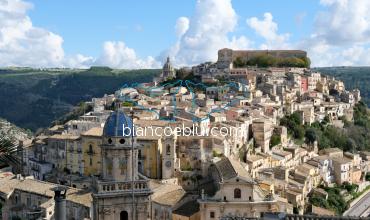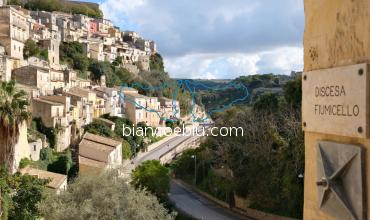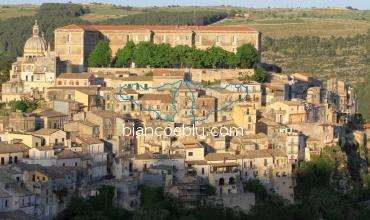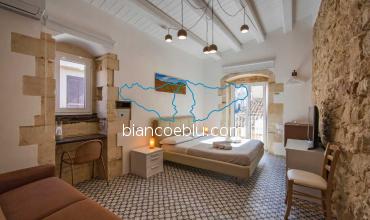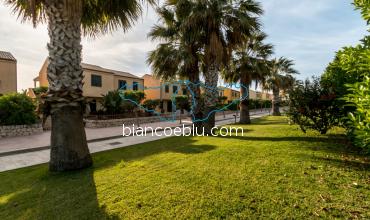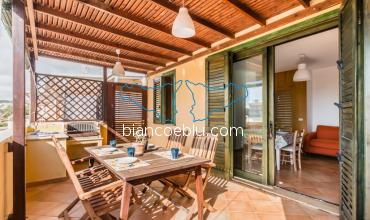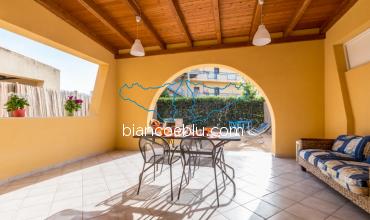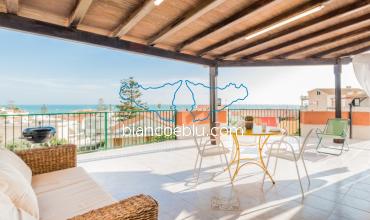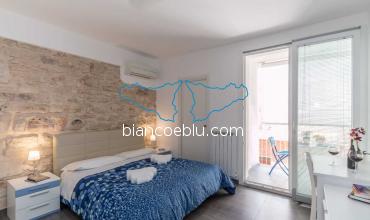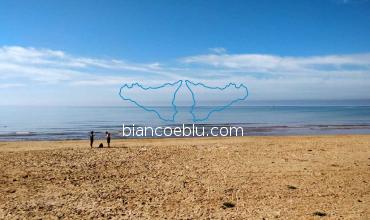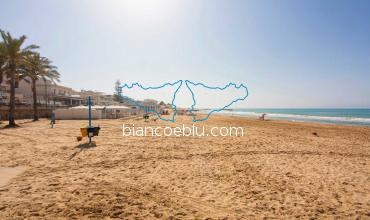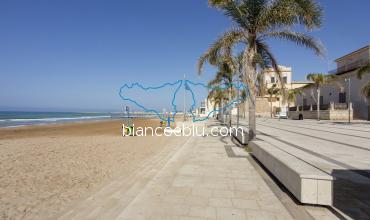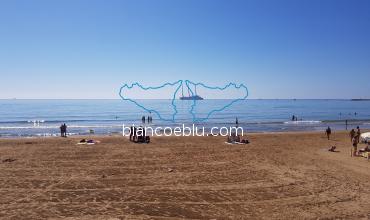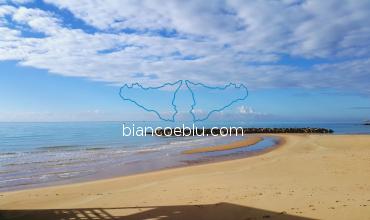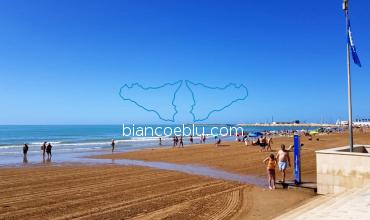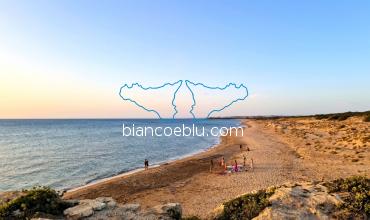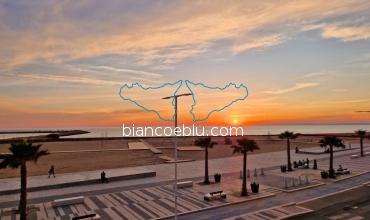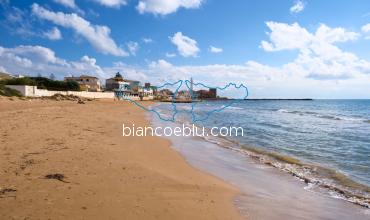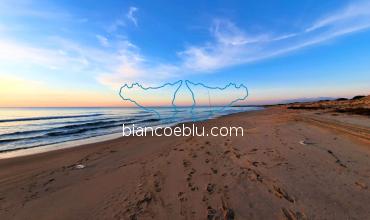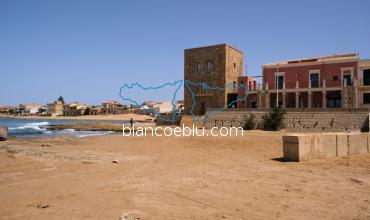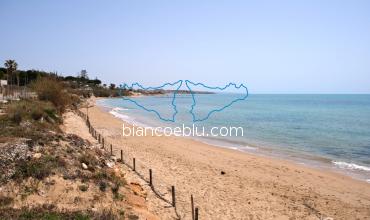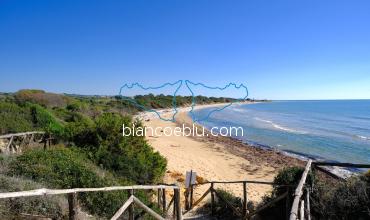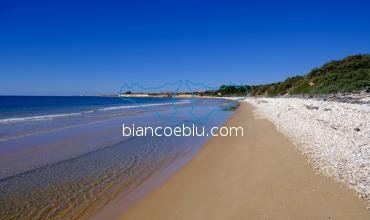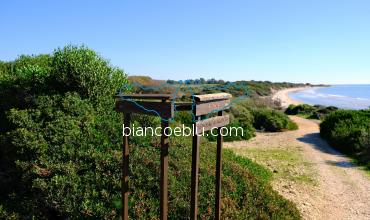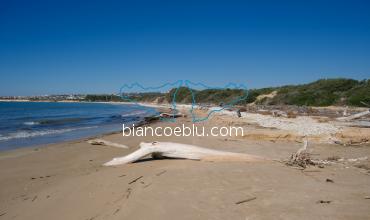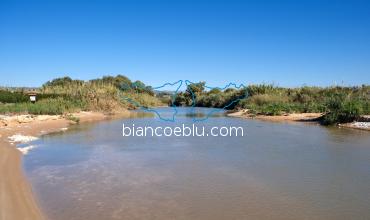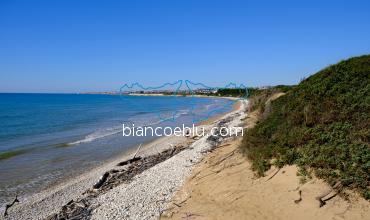Ragusa is usually called the city of the two patrons, of the three bridges, and is often described as the island within the island. It is a small commune of 60,000 inhabitants and it is also the southern capital of Italy’s provinces, located in south-eastern Sicily.
Its territory is very eclectic and offers shapes, colors, and smells that could rarely be found in other places. The low density of the population and the province’s vast territory puts it in third place by extension in Sicily and seventh in terms of population.
Bits of historical background.
The history of the city of Ragusa goes back to 1300 BC to the first settlements, situated in its ancient part, Ragusa Ibla.
Ragusa Ibla was founded by the Siculi (the ancient habitants of Sicily)
under the name of Hybla Haerea, which meant "the place where the grain comes from".
There were different conquerors and masters of this area of Sicily, and each of them determined the upcoming development of the County. In fact,
after being conquered by the Swavians, Ragusa Ibla became part of the County of Modica.
Thanks to the economic revolution that was a result of the emphyteusis the territory of the County of Modica set off towards strong and flourishing growth. This process actually contributed to the creation of beautiful dry stone walls for the land dividing and this way contributed to the formation of a large part of an aristocratic upper class, the new bourgeoisie.
The "Ragusa Superiore" construction starts immediately after the devasting earthquake in 1693. However, after the disastrous event, there were conflicted ideas about the reconstruction of the town. A part of the old aristocracy decided to rebuild at the same spot, while the new bourgeoisie chose to build the new houses in the new Ragusa. This way, they form two towns of Ragusa with different political and administrative lives. This split went on till they were merged in 1926.
Ragusa stands on the Iblei Mountains at 500 height above sea level, in south-eastern Sicily. The territory of Ragusa is limited to the east by the Irminio river, while to the north it is defined by the San Leonardo river and borders Catania and Syracuse.
The map is interactive and tags the center of Ragusa Ibla.
Our advice will be to stay at the seaside in Marina di Ragusa, which is 25 km away from Ragusa. Marina di Ragusa is marked by higher temperatures and has many services available.
Find out the best offers of B&B, apartments, and guest houses in Marina di Ragusa. Bianco e Blu offers different options to meet your every demand to make your Marina di Ragusa vacations special.
All of our apartments and guest houses are near the seaside and its beaches of fine sand. Discover the beautiful
“Bianco e Blu bed and breakfast" and stay in cozy rooms, just 50 meters away from the sea and in the very heart of Marina di Ragusa.
Our services are the same for all our available solutions. Utility consumption, weekly cleaning, and linen change are always included! Hurry up to enjoy our beautiful apartments!
All our solutions are available here.
Comiso airport and Catania airport are the main airports for the eastern part of the island.
Catania airport which is 100 km from Ragusa, is one of the top ten Italian airports for the number of passengers and national and international connections.
There are two airports, Catania and Comiso in the estern part of Sicily:
There are two airports, Palermo and Trapani in the western part of Sicily:
Buses
Traveling by bus, compared to traveling by train,
could be the best solution as trains in eastern Sicily take about twice as long.
Anyway, it is highly recommended to arrive by car or rent one, especially for those who want to travel and to see Sicily.
For more information visit our “
Directions “ webpage.
The beaches in the province of Ragusa are remarkable for their vastness and extension, by the fine golden sand, and its crystal clear blue waters. The Ragusa coast is around forty kilometers and sandy beaches cover about 80% of it. Only in small parts of it, there are cliffs that break this continuity of the sandy beaches.
One of the most beautiful beaches within the commune of Ragusa is obviously one of Marina di Ragusa. Within several kilometres, continuing both in east and west directions, it will be a real adventure to discover other types of beaches, less frequented and depending on a season full of local flora.
THE BEACHES IN MARINA DI RAGUSA
The beautiful Ragusa coast is loved for its long and free sandy beaches that give its visitors a feeling of nature and freedom. The most popular of them remains the beach of Marina di Ragusa, which is valued not only for the beautiful sea and the beaches of golden sand but also for the dozens of services, restaurants, and entertainment that you can rarely find elsewhere in Sicily.
Its beaches are a little bit more than two kilometers and you can enjoy them is absolutely free. Just small parts of the beach are dedicated to the bathing services of the lidos. These lidos, in addition to the sunbeds and umbrellas rental, also provide a restaurant service. In Marina di Ragusa there are five lidos equidistant from each other.
Marina di Ragusa has received the recognition of the Blue Flag from the FEE (Foundation for environmental education) for several years in a row, thanks to the quality of its waters and the services offered. Its waters are shallowing gradually, which makes Marina di Ragusa the perfect destination for family holidays.
BEACHES NEAR MARINA DI RAGUSA
West beaches close to Marina di Ragusa:
You’ll hardly notice the typical Mediterranean characteristics in villages near the coast. The visible differences could be seen at Cava Randello, where all human traces vanish. Its sandy beach is perfect for those who want to enjoy moments in touch with nature, well isolated thanks to the presence of huge sand dunes surmounted by the typical Mediterranean flora.
One more destination valued by tourists from all over the world is Punta Secca, a typical coast village with small and
typical Sicilian fishermen's houses.
The village is much-appreciated thanks also to the famous Italian TV series “Inspector Montalbano". Its beaches are sandy and free.
East beaches close to Marina di Ragusa:
If you decide to choose an opposite direction and to head towards the East, you’ll find the beautiful beaches of Donnalucata and Sampieri. Donnalucata is a small town that makes up part of Scicli commune; its beaches are very vast and, remarkable for light signs of human intervention. You can enjoy sand dunes with typical Mediterranean vegetation there.
Sampieri, on contrary, is a very small fishing village, which attracts tourists a lot with its beautiful gradually shallow sea and a very long beach of fine sand. Its beach is located outside the town, which is why it is full of beautiful clean dunes, typical of the Mediterranean scrub.
The history of Ragusa Superiore is quite short, compared with that one of the island. The severe earthquake of 1693 which struck the Val-di-Noto, including the ancient Ragusa Ibla, drastically changed the urban profile and style of the city.
There were many aristocrats who decided to build the city in a safer area, on a high hill above the old town. This is how the construction of the city of Ragusa began: uphill the new city began to take shape, while downhill, on the old spot old nobility kept on rebuilding rebuild of the same walls of the ancient Ragusa Ibla.
The two cities, the new one and the old, lived a separate administrative life until 1926 when they were united into a single commune, receiving the status of the provincial capital.
THE CENTER OF RAGUSA (UPPER)
The Cathedral of San Giovanni is definitely the place to visit in the new city, built between 1706 and 1760, with an immense square in front of it and a stairway made of a typical local stone of a dark color, the renowned "Pietra Pece". There are numerous Baroque palaces with typical ornaments and imagines of heads in the corbels of the balconies, in the architraves, and in the keystones of the doors and windows.
Ragusa is usually called the city of three bridges for its picturesque three bridges that unite the two parts of the city over the valley. The Ponte dei Cappuccini was the first built bridge, a beautiful stone construction that represents a true masterpiece of mid-nineteenth-century architecture. Later were constructed two more bridges: the Ponte Nuovo, in 1937 and the Ponte San Vito in 1964.
UNESCO Heritage Monuments in Ragusa:
RAGUSA IBLA, THE ANCIENT TOWN.
Yet, the monuments of the unique White baroque are mostly located in its oldest part, Ragusa Ibla, whose historic center is probably among the most interesting in the whole of South-Eastern Sicily. Walking down the countless scales you will find yourself in the world of impressive forms of great Sicilian Baroque and live experience words cannot describe: it should be seen with your own eyes! Ragusa Ibla is also a UNESCO heritage site and has been the setting for many Italian films and the fiction of Commissioner Montalbano.
We advise you to visit Ragusa Ibla on foot, starting from the square in front of the church of Santa Maria delle Scale, a fifteenth-century church rebuilt in the eighteenth century stay there to admire the panorama of the ancient city center. From this church starts two hundred and fifty steps scale, which leads into one of the most picturesque streets in Sicily with beautiful eighteenth-century buildings. The stairs end with the eighteenth-century church of Santa Maria dell'Idria and opposite the one dedicated to the Souls in Purgatory.
The most important monument of Ibla is the basilica of San Giorgio designed in 1744 with a towering facade among the most beautiful, if not the most beautiful, in Sicily. The decorative reliefs of the portal, the capitals, all the moldings, the cornices, the pedestals, the columns, etc. are very elegant. Inside it, you can enjoy the canvases and works of art.
Near the Duomo is the neoclassical building of Circolo di Conversazione. The course, which starts from the basilica, will lead to a small square where the church of San Giuseppe is. Other churches are located inside the town park: San Domenico, San Giacomo, and Cappuccini Vecchi.
A list of the Unesco Heritage Monuments in Ragusa Ibla
Architectural elements, constructed before the 1693 earthquake in Ragusa Ibla
The old portal of S. Giorgio, is a precious example of Gothic-Catalan architecture, represented in Ragusa Ibla by the remains of S. Giorgio’s church built in the XII century. In the upper part of the church’s arch is depicted S. Giorgio killing the dragon with a sword. This saint is today a symbol and the Saint Patron of Ragusa Ibla.
Porta Walter is the only remaining entrance, out of the three that originally gave access to the city. Ancient walls that protected the town were built in the Byzantine period, and they are partly still visible today behind the church of the Souls in Purgatory.
The Gothic-Catalan portal of the church of Santa Maria delle Scale built in the fifteenth century survived the disastrous earthquake.
Ragusa Ibla is a veritable pearl of the baroque Ibleo, often referred to as a symbol of Sicilian Baroque. There are more than 50 churches, 18 monuments of UNESCO heritage, noble palaces of considerable historical and artistic value, all built with local stone and heavily decorated.
MUSEUMS AND ARCHAEOLOGICAL AREAS
Ragusa’s Archaeological Museum
The Archaeological Museum stores artifacts from various eras, which illustrate the archeology and ancient history of the Iblea’s territory. There are five exhibition sections there, dedicated to prehistoric stations of humans, the Greek period of Kamarina, indigenous centers, Hellenistic centers, and the late Roman period. The exhibited items relating to the town and the necropolis of Contrada Castiglione are of great interest.
From this area, where a necropolis dating back to the early sixth century has been identified, come one the most important discoveries of the whole Iblea area, the 'Warrior of Castiglione', a bas-relief made from a single slab of local limestone, depicting an armed man riding a steed proceeding to the left, while the ends of the block are decorated with the proteomes of a bull and a sphinx.
Kamarine Museum
The Kamarina Museum was founded on a clayey cliff that stands out towards the sea, where the main settlements of Kamarina once stood.
The Regional Museum of Kamarina also known as Antiquarium was established in the nineteenth century. It was built within the structure of the old farmhouse that existed in that territory.
Next to the remains of the Temple of Athena, there are the various pavilions into which the Antiquarium is divided, and the historical artifacts, coming from underwater research in the sea in front are displayed, a
large collection of amphorae found in the necropolis, Corinthian, Hellenistic, Etruscan, and Punic, finds with references the characteristics of the geological basin and the most important aspects of the paleontological events, from the coastal villages of Passo Marinaro and Branco Grande, fragments of Corinthian pottery from the archaic age, in which can be retraced the history of Kamarina during the conflicts with the motherland Syracuse.
All the discovered objects came to light in the necropolis of Rifriscolaro, Dieci Salme (6th century BC), Piombo (5th-3rd century BC), Scoglitti (6th-5th century BC), Passo Marinaro, Cozzo Campisi and Randello (5th-2nd century BC). B.C.).
Natural Reserves
The river Irminio Natural Reserve
One of the small paradises of the Iblea zone is the River Irminio Nature Reserve, whose waters originate at the foot of Mount Lauro (inactive volcano now) and after a long way of 50 km reaches the Mediterranean Sea near Marina di Ragusa. The reserve still retains the typical characteristics of the Mediterranean maquis, visible and visitable through the beautiful tracking paths that run along the river.
The Aleppo Pine Natural Reserve
One more place worthy to see is the Aleppo Pine Nature Reserve, a protected area that lies on the territories of Ragusa, Comiso, and Vittoria communes, an area full of woods where botanical species of great interest could be seen. A specie considered native is exactly the Pinus Halepensis, from which the reserve takes its name. The reserve impresses with its flora and fauna variety but a visit on foot will also allow you to discover some of the interesting historical-cultural aspects. Crossing the paths, in fact, it is possible to visit an ancient mill that can be considered a true and proper example of peasant archeology.
Natural Caves
Cave of Mercy
The beautiful Cava della Misericordia is extended from the upper part of Ragusa to the slopes of Ragusa Ibla. On its way, it passes through the immense wound of the limestone plateau where nature has taken over. In the lower part of the cave, there is a famous Hypogeum dated back to the Byzantine era with three thousand tombs partly carved into the rock.
Ispica Cave
Cava d'Ispica is one of the largest rocky complexes in Sicily. The Cava is 13 km long, it is crossed by a stream, and is best visited on foot. There are various types of rock-cut dwellings dating back to the earliest Neolithic period, Pre-Greek and Classical to Byzantine periods. It is possible to admire hypogea, oratories, Christian catacombs, and medieval houses. In addition to the historical to its historical value, the cave is full of flora and fauna so typical for Iblea.
EVENTS AND TRADITIONS
Upper Ragusa
There are several events organized in Ragusa Superiore. Most of them take place at Piazza San Giovanni, in front of the cathedral, while others are still in Piazza Libertà, beyond the three bridges, in the historic center of the city. Many events are related to gastronomy and music, but also to art, culture, and local traditions.
End of August - The beautiful Festivity dedicated to the Patron of Ragusa, San Giovanni Battista, includes a procession through the streets of the city of Ragusa. The procession is carrying the ancient statue of the Saint through the streets of the city. Lots of street markets and selling are organized on this occasion.
September - FestiWall is an event of international interest that enhances the invisible and most simple dark sides of buildings with colorful murals of the highest quality. In this period it is possible to see how murals cover the walls of the city of Ragusa.
End of September – FAM, a very important Mediterranean Agri-food Fest in Ragusa, a point of reference for animal breeding at various levels and agriculture. The event takes place at the Foro Boario in Contrada Nunziata.
September/October - Birrocco in Ragusa in Piazza Libertà - Festival of local craft beer producers, followed by concerts and live music.
Late June - Scaccia Festival in Piazza San Giovanni in Ragusa Superiore – Scaccia ragusana, or Foccaccia in Italian, is a typical gastronomic product of Ragusa. The gastronomy festival is accompanied by shows and live street music. (in Italian
Abbinata singolare alla gastronomia seguono plurale ???spettacoli e musica dal vivo. Deve essere almeno abbinati… Dopo questa e la frase più tosto siciliana “Montalbano sono”…verbo va dopo il complimento d oggetto)
Lower Ragusa - Ragusa Ibla
There are many events during the year in the baroque scenery of Ragusa Ibla. The most interesting and attractive for tourists is the feast of the patron saint of San Giorgio but there is also something for lovers of street artists. "Ibla Buskers" is a real show! There are also many cultural events and music in the streets of the center. In Ragusa Ibla, you won't be bored!
March - Feast of San Giuseppe Ragusa Ibla - The fests of San Giuseppe are characterized by majestic dinners, in honor of the Holy Saint Joseph. These dinners, after the blessing rituals, are given as an offering to families in need.
Last Sunday of May and end of June - Feast of the patron saint of San Giorgio di Ragusa Ibla is traditionally celebrated at the end of June but the official anniversary is at the end of May. The procession passes slowly through the streets of the city and is followed by the ballad of the Saint. Just wait until midnight to see the magic fireworks of the feast.
A Tutto Volume – this festival is a reference to art and culture, which has become of great interest at an editorial level. Many writers of national importance were present.
September - Ibla Street Food Festival - Sicilian street food attracts thousands of people. You can taste all sorts of products from all over Sicily!
October - buskers is the Ragusa Ibla festival! Dozens of street artists enchant and amaze thousands of visitors in the suggestive scenario of the Iblean Baroque.
October - Scale of Taste in Ragusa Ibla - The enchanting streets in the scenery of Ragusa Ibla are filled with crowds of people for a gastronomic event that serves to promote the products of our territory.
RAGUSA’s LOCAL MARKET
The Ragusa market is the largest local market in the Province. It takes place once a week, Wednesday, in the commune area near the "Selvaggio" football field.
Schedule of Local markets in the municipality of Ragusa:
Night life
Recently, the historic center of Ragusa has become alive thanks to the opening of a series of pubs, restaurants, and trattorias in the streets of the center. Now Piazza San Giovanni and its neighboring streets are a meeting place for young people of all ages. There are various concerts organized in the central square, especially during the Christmas holidays, New Year's Eve, and long weekends.(in Italian phrase there is no verb)
There are three nightclubs in Ragusa, the Lanificio is suitable for a very young audience, the Spazio 87 is more like a cultural center with many events of various kinds, and the biggest disco in the Province of Ragusa that is the Koala Maxy. The last one, unlike the others, is open all in the summer, and on weekends in the winter, and mainly hosts nationally renowned DJs. It is a very large club, with huge open-air dance floors and which can host around three thousand people.
Escursions
Association Kalura.
Excursions proposed by the Kalura association of Ragusa are definitely among those ones to do. They are managed by expert excursion guides, who organize also trekking and walks in the Ragusa area as well as throughout Sicily.
While trekking you can enjoy the unique experience of discovering the area from a point of view that a tourist can rarely observe.
All the routes vary from the simplest, also suitable for children, to the more complex trekking ones, but all aim to give you naturalistic experiences that enrich you from a cultural and emotional point of view.
Each excursion includes a typical lunch or degustation of the products of the area visited, contact for information: www.kalura.org 327 0069217 info@kalura.org
La Terra Viaggi
The leader excursion office in Marina di Ragusa is the company "La Terra" which operates throughout the territory in the Province of Ragusa, in the offices of Marina di Ragusa, Modica, and Ragusa. The agency's strong point is certainly the rich fleet of buses of all sizes that will guarantee dozens of excursions, events, and services throughout Sicily. It is possible to book any event or service through their website, even if you only have one day available.(with all respect, excursions are supposed to be interesting, the rich fleet of busses is a bonus but not a strong suit)
Among the many excursions organized by them, we have day tours to: Modica, Scicli, Ragusa Ibla and Donnafugata, Syracuse and Ortigia, Noto, Marzamemi by night, Etnaland water park, Catania by Night, Scala dei Turchi and Agrigento, the lakes of Avola and Marzamemi, Taormina by night, Noto by night, Alcantara Gorges and Taormina, Buccheri med fest, Malta by night and Malta in one day
The services they offer are transfers and private excursions for individual or group tours.
If you want to get information about other events, or concerts or you have a special request please visit their website: www.laterra.it
The typical Ragusa products are the result of country work, where the local farms and the farmers are the main origins of raw materials.
Products that are used in what was for a long time considered "poor cuisine", were so defined because the same ingredients were used in the kitchens of the humblest people, but certainly, they are not that simple in taste and in the harmony of the combinations of different flavors. Centuries of dominations and traditions learned from distant and different cultures, have created the products of Ragusan cuisine unique and unforgettable.
Among the most remarkable food products of Ragusa there are:
Among the traditional dishes, we have to mention:
Restaurants in Ragusa Superiore
There are many restaurants and trattorias in the center of Ragusa. One of the typical Ragusan dishes, which we recommend you try, is ricotta ravioli or cavatelli, with pork sauce, but there for sure will be other typical dishes in the area.
Restaurants of Ragusa Ibla
In Ragusa Ibla, it is very easy to dine at open-air restaurants, especially in the summertime.
Agriturisms of Ragusa
The tradition of all locals on Sundays, and not only, is to have lunch in a farmhouse (agriturismo). There are many farmhouses in Ragusa and their cuisine is exactly that one local. There is no doubt, that it is necessary for the owners of agritourism to produce and elaborate all the ingredients for the plates served on their tables in the same places where the pastures come from. For this reason, the farmhouses are located in beautiful countryside. Usually, they look like typical rural stone buildings, surrounded by olive and carob trees, in full contact with nature.
The products of our land, which you will find in a farmhouse are appetizers of olives, typical cheese plates with provola or caciocavallo, fresh or dried tomato bruschetta, ricotta, tomato or vegetarian focaccia, first courses usually served with sweet ricotta ravioli and salted with pork sauce, cavatelli alla Norma and cavatelli with pork sauce, mixed roast meat such as sausage, a slice of beef and pork rib, various types of salads and to conclude homemade dessert such as cassatella di ricotta cheese, fried sweet ravioli with chocolate drops, unlimited wine, liqueurs, and coffee to complete.
Agriturismo Marina di Ragusa
